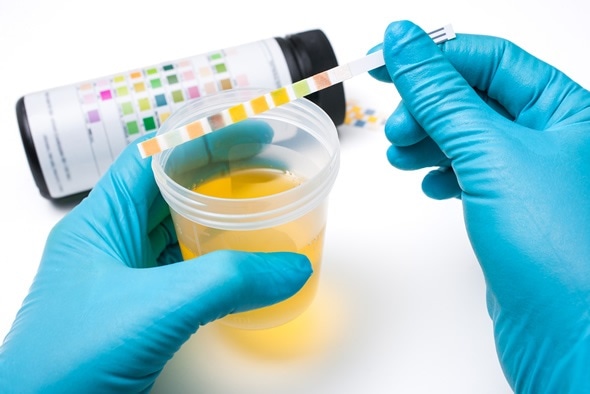Now Reading: Hair’s Importance in Sexual Assault Case
-
01
Hair’s Importance in Sexual Assault Case

Hair’s Importance in Sexual Assault Case
Sexual assault on women and children are some of the most heinous crime against mankind. According to the statistical data of government, it has been estimated that there was 32,500 reported case of rape in 2017 in India as compared to 24,923 in 2012. The case shows a constantly increasing pattern even today (1).
IMPORTANCE OF HAIR IN SEXUAL ASSAULT CASE
Hairs are slender fibrous outgrowths projecting from the skin that possess different microscopic characteristics such as color, shape, scale pattern, and root appearance. Variability in such characters can help forensic expert to determine sex, age, and racial origin of the person that shed the hairs, as well as allowing one to analyze which area of the body hairs has come from. Analysis of hair provides valuable information in case of sexual assault that can help to lead to the identification of victim and suspect/s involved in the crime (2).
Transfer of Hair in sexual assault:
The Associative head and pubic hair transfers can provide a circumstantial connection between victim and object in sexual assault cases (3).
Pubic hair microbes can refer to as a forensic tool:
When expert think about the sexual assault, then human hairs come to mind as great evidence to start, however, numbers of samples recovered at crime scenes are shed hair containing an insufficient level of nuclear DNA, denotation they can’t be used to make an identification. This is because when the short tandem repeat; STR analysis is performed on crime-scene DNA, where the probes are attached to the control samples, and then it is amplified in length by a polymerase chain reaction PCR to create a DNA fingerprint. Two samples can then be analyzed by comparison to find if there is a match (4).
The value of hair testing in GHB facilitated sexual assault case:
When a women is sexually assaulted after administration of gamma-hydroxybutyrate GHB and morphine. The hair sample is collected after the alleged offence in order to sample the corresponding period after regular growing. Then after decontamination with dichloromethane, the hair shaft is cut into 3-mm segments. They are overnight incubated in 0.01 N NaOH in the presence of GHB-d6, followed by neutralization and extraction in ethyl acetate under acidic condition (5). Toxicological analysis of her hair segments is done by gas chromatography and mass spectrometry (GC/MS) and the concentration of morphine and GHB can be calculated (6). A higher value of GHB will be found in a particular period associated with possible criminal or illegal activity and also associated with the presence of the morphine in the same period. In the case of rape under influence, a clear increase of the corresponding segment (about 2.4 mg) in time is observed, in comparison with other segments (0.6-0.8 mg). This toxicological analysis of hair demonstrates that a single exposure to GHB in a case of rape can be documented after hair analysis when is collected about one month after the crime (7).
Hair- The microbial ‘Signature’ of sexual assault (Rape)-
The bacterial communities living on an individual’s pubic hair can be analyzed for microbial ‘signature’ to trace their involvement in sexual assault cases. To identify the culprit from the hair they leave at the scene of occurrence a substitutive approach could be through the detection of an identical microbial ‘signature’. The expert found in their initial results that pubic hair, in particular, shows the main potential for forensic investigation, they also found that an individual’s pubic hair microbiota appears to be transferred during intercourse, and they have the potential for forensic analysis on sexual assault cases (8).
Conclusion-
As in the context of Hair we can say that it has multiple application in the Forensic field as well as other too; Forensic toxicology, clinical toxicology, occupational medicine, and doping control, etc. But as in such as heinous crime; sexual assault case, it plays a very important role for species and racial identification. As we all know that every hair is different and specific from each individual, even it varies from their own body parts, through DNA profiling it leads to somewhat easy to get a connecting link among victim, suspect, and crime scene to find out the real culprit of offense.
REFERENCES
Johansen, S. 2017). Detection of the antipsychotic drug quetiapine in the blood, urine, and hair samples of the victim of a drug-facilitated sexual assault. Forensic Science International270, e12-e15. Doi: 10.1016/j.forsciint.2016.12.010.
2.Enos, W., & Beyer, J. (1981). The Importance of Examining Skin and Hair for Semen in Sexual Assault Cases. Journal of Forensic Sciences, 26(3), 11407J. Doi: 10.1520/jfs11407j
3.Mann, M., 1990. Hair Transfers in Sexual Assault: A Six-Year Case Study. Journal of Forensic Sciences, 35(4), p.12909J.
4.Tripathi, K., & Chatterjee, A. (2017). Reporting Rape Cases in India. SSRN Electronic Journal. DOI: 10.2139/ssrn.3005057.
5.Busardò, F. (2016). The importance of hair testing in GHB facilitated sexual assault cases. Journal of Forensic and Legal Medicine, 39, 74-75. Doi: 10.1016/j.jflm.2016.01.020
6.Busardò, F., Vaiano, F., Mannocchi, G., Bertol, E., Zaami, S.& Marinelli, E. (2016). Twelve months monitoring of hair GHB decay following a single dose administration in a case of facilitated sexual assault. Drug Testing and Analysis, 9(6), 953-956. Doi: 10.1002/dta.2100
7.Kintz, P., Villain, M., & Ludes, B. (2004). Testing for the Undetectable in Drug-Facilitated Sexual Assault Using Hair Analyzed by Tandem Mass Spectrometry as Evidence. Therapeutic Drug Monitoring, 26(2), 211-214. DOI: 10.1097/00007691-200404000-00022
8.. Pieper, E., & 2016, C. (2016).Reporting Sexual Assault: Review of the Literature Regarding the Decision to Report Sexual Assault. The Boller Review, 1(1). Doi: 10.18776/tcu/br/1/23
Author – Miss Sandhya Soni,
Intern at Dept. of Forensic Science & Criminal Investigation,
Legal Desire media & Insights (June 2020)











